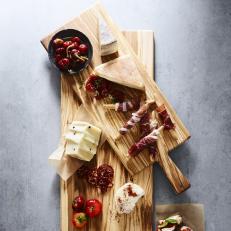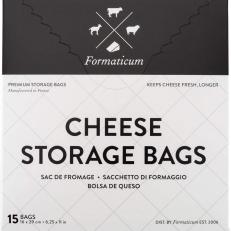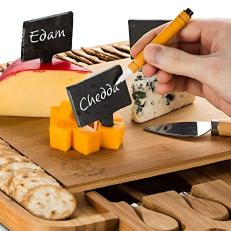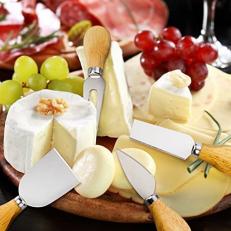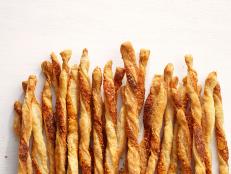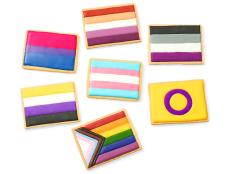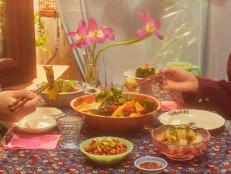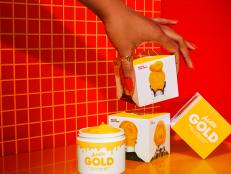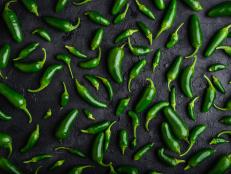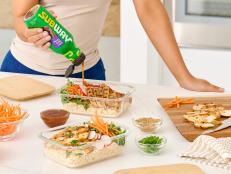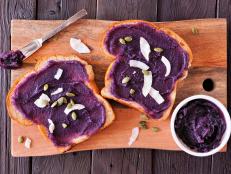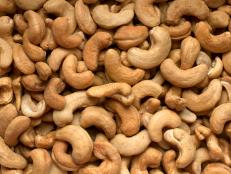How to Set Up a Cheese Platter

When it comes to a party, just about everyone says cheese. Not only is cheese wildly popular these days, it has also become a conversation piece. Think about it. Whenever there's a platter of really good cheeses, most people dig in with gusto and share their opinions about their favorites. But while creating a cheese platter is simple, having a few simple tips in your back pocket will ensure a winning cheese course every time.
Before you get started, here's what to consider:
- How many people are you serving?
- Are you serving cheese before dinner or as an after-dinner cheese course?
- Are there any cheeses you definitely want to include or maybe definitely avoid?
- What is your budget?
Once you've answered these questions, it's time to determine the quantity and the types of cheeses you'll need. First, the quantity:
- If you're serving the cheese as a hors d'oeuvre, plan on 1 to 2 ounces of each cheese per person.
- If you're serving the cheese as an after-dinner cheese course, figure 1 to 1 1/2 ounces of each cheese per person.
- Once you've determined the above, you'll need to decide how many cheeses to buy. Often one really great cheese is enough because it's so satisfying that it becomes a conversation piece. The exception is when cheese is the centerpiece of your party. In that case, you'll need at least three and probably five or six cheeses. Most of the time, though, serving three cheeses is a good amount. That way you won't overwhelm people with too many choices.
Now, for choosing your cheeses:
You can go any number of ways when deciding which cheeses to choose for your cheese platter. Even though it may seem intimidating, just remember there are no "wrongs" when it comes to cheeses. Sure, you might end up with a cheese or two you don't care for, but you won't have committed any entertaining faux pas even if that's the case.
Here are a few basic guidelines to get you started:
- If you're serving cheese before dinner, choose lighter cheeses such as an herb-coated goat cheese or fresh mozzarella.
- If you're serving cheese after dinner, then you can go one of two ways — serve just one rich and creamy cheese such as the easy-to-find triple-crème cheese called St. Andre — or go for full-flavored cheeses like Manchego, cheddar, aged gouda and/or blue cheeses.
- Think of a theme. Maybe you'd like to focus on the cheeses of the United States or even a specific region within the U.S., Spain, Italy or France. That automatically narrows the field.
- Choose one cheese made with each type of milk — cow, goat, and sheep's milk.
- Choose cheeses that are all made with just one type of milk, such as sheep's milk. Doing this is a great way to learn about the different styles of cheese within one milk category.
- Select different cheeses within the same family of cheeses. Examples of this would be three or four styles of soft-ripened cheeses such as Brie and Camembert and any other cheeses that have a similar white downy-like rind. Or, you can select a few distinct styles of blue cheese. Doing this is a great way to learn how similar cheeses differ in flavor.
- Choose cheeses with different textures. Go for a soft and creamy cheese such as Brie (or a similar artisan-style cheese made in your area); a firmer style cheese such as cheddar (preferably farmhouse), gouda or Gruyère; and a hard grating-style cheese like Parmigiano-Reggiano.
Best Boards for Displaying Cheeses
Arranging your cheese platter
- Never crowd your cheese platter. If you do, you're likely to find your knuckle in one of the cheeses as you attempt to cut the one you'd like.
- Offer a different knife with each cheese. If you cut all the cheeses with just one knife, they'll start tasting like each other.
- Serve slices of baguette or crackers in a separate basket or bowl.
- Choose plain (sourdough or French) bread or neutral crackers. Flavored breads such as those with sesame seeds or garlic and herbed crackers tend to overwhelm the flavors of the cheeses. The exception is breads containing walnuts, dried fruit or olives. These are all great with cheese.
- Serve the cheeses either on a platter (or more than one if needed) or plate the cheeses individually. The latter method works particularly well if you're serving cheeses after dinner. Each person gets their own plate, and best of all you get to prepare the cheese course before your guests arrive, leaving one less last-minute thing for you to do. (The plates can sit at room temperature, lightly covered, for a couple of hours without any harm to the cheese unless your kitchen is particularly warm. In that case, keep them refrigerated until an hour before serving time).
Best Cheese Accessories
Serving cheese
- Be sure to serve cheese at room temperature. To do this, take the cheeses out of the fridge at least one hour ahead of time.
- Serve before-dinner cheeses with relatively savory accompaniments such as olives, prosciutto, nuts and/or chutney and after-dinner cheeses with sweet accompaniments such as jams, honey, dried fruit and toasted nuts.
Written by Laura Werlin, www.laurawerlin.com, author of Laura Werlin's Cheese Essentials.
























